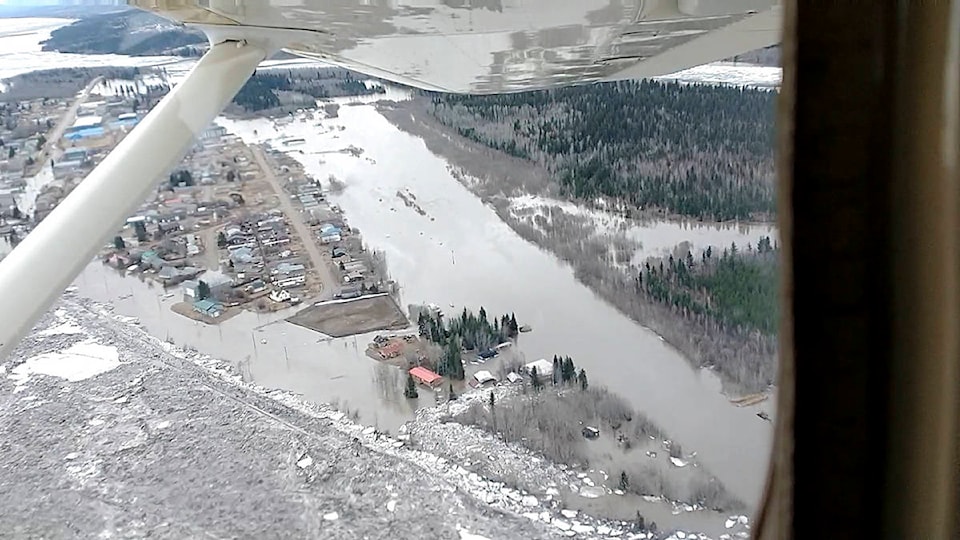Schools in Fort Simpson and Jean Marie River are scheduled to reopen following the May long-weekend.
Evacuated residents of Fort Simpson returned to the village this week as water levels receded. The community is now working to assess damages from the worst flooding in 50 years, according to mayor Sean Whelly.
Remaining evacuees in the Fort Smith and Hay River evacuation centres returned to Fort Simpson. Meanwhile, the evacuation centre in Fort Providence continues to support evacuees from Jean Marie River
With the Fort Simpson school on higher ground, Whelly said damages, if present at all, are limited. The bigger obstacle, he said, is teachers and community members returning to the community and dealing with issues on their own properties.
At least one teacher is among the six households being put up in a hotel.
Since it’s been deemed safe to return to the island, Whelly said the GNWT has yet to find any employees or contractors who can come in to assess the damages.
Whelly compared the situation to a patient going to the doctor for back pain, and the doctor responding that he can’t help because the patient couldn’t identify exact criteria of the pain.
“The doctor is supposed to do the assessment, not the patient. The details need to come from the professionals,” Whelly said.
He’s calling on the territorial government to “step-up,” “put their money where their mouth is,” and “stand by their commitment to do the work.”
In the weeks leading up to the evacuation, Whelly recalls a number of notices warning of high water levels and likely flooding. “We knew the flooding was coming and they still didn’t have an assessor around.”
With the disaster of the evacuation behind the village, Whelly said he has the residents of Fort Simpson and the kindness of those who donated to thank for the easing the crisis.
Now community members are turning to Whelly with questions of next steps that he can’t answer without getting some clarity himself.
He said it is unclear what the territorial government will fund and what the village is paying for out of pocket.
“The village is not an endless pot of money,” he said. “At some point the territorial government needs to say what they will fund and what they won’t.”
Whelly suspects the GNWT is looking to get reimbursed from the federal government themselves but is calling on the territorial government to be clear on how the community should move forward.
“What’s the hold up? Why do we have to go through typical government bureaucracy in the aftermath of an emergency.”
Meanwhile, Whelly said that with all the talk of Canadian Rangers coming in for support, he has yet to hear whether or not that is still on the agenda.
With the worst of the flooding behind them, Whelly said having the troops “isn’t mission critical” he is just looking for communication on what is and is not in the plan.
Returning residents have been managing sewer backup problems and keeping photos of damages for those whose homes are salvageable.
Whelly expressed concern for the homeless population and clients of the warming shelter, which has faced “irreversible damage.”
“We need an assessor to show up. We need to talk about a solution for those who have been permanently displaced from their home,” he said. “None of these resources are being coordinated or being put into place.”
To the territorial government, Whelly is asking, “Is there a solution? If so, tell us now because people would like to know.”
